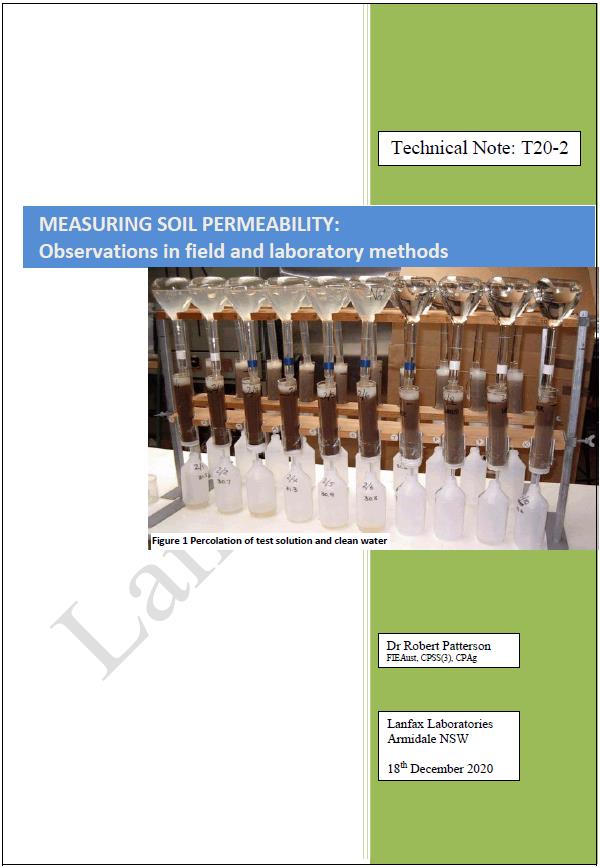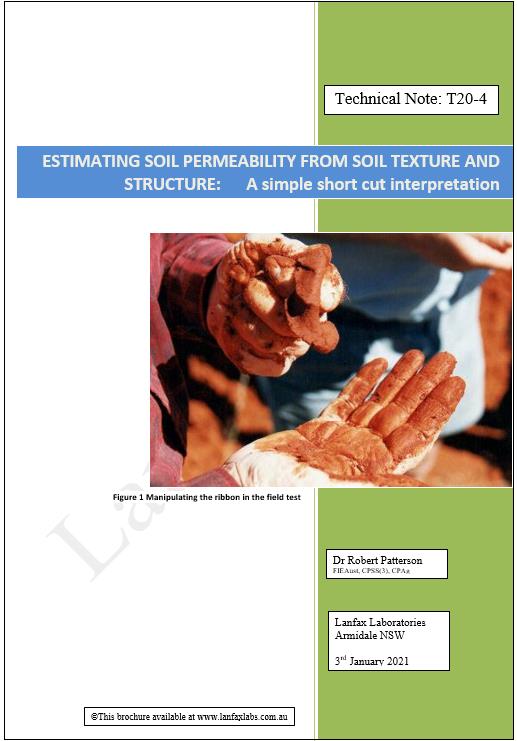Soil Permeability: finding a numerical value
Introduction
In the design of on-site wastewater management systems, such as sub-soil trenches or irrigation fields, the long term application rate (LTAR) of applying effluent (treated wastewater) depends upon the particular properties and characteristics of the soil in and around those discharges AND the method of applying the effluent to the site specific soil landscape. While the soil and application methods are uniquely linked for a sustainable operation, it is the soil component that must be examined to clearly delineate the attributes that either enhance or diminish the rate at which effluent can be applied.
Two methods of estimating soil permeability, that is the movement of water through the soil, in response to gravity (drainage), capillary actions (water pulled along by forces of adhesion and cohesion), filling of voids within the soil matrix (storage) and escape of water through plant roots and ant channels, are in common use.
The first of the methods explained here are those in-field measurements that rely upon the permeability of a soil body under test conditions. The devices usually employed can be home-made, at low cost, you don't have to pay a fortune for elaborate devices. The benefit of low cost items is that you can build several and operate them simultaneously to better manage the statistical evaluation. Technical Note T20-2 provides some detail on several devices but does not detail the operation or mathematical calculations required to convert the field measurements into soil permeability values.
.
Contents of Technical Note T20-2
1.Introduction
2. Measuring Techniques
2.1 Percolation test calculation
2.2 Double ring infiltrometer
2.3 Constant head permeameters
2.4 Disc permeameter
2.5 Percolation testing
2.6 Undisturbed core
2.7 Percoation demonstration
3. Comparisons of Field Permeability Rates
4. Conclusion
5. References
Download the document Measuring Soil Permeability click here
Soil textural and structural influences on soil permeability
In recent years, the cost of undertaking replicated in-field soil permeability measurements has become an impediment to single lot on-site wastewater management plans. Even with these in-field measurements, variability of a reliable statistical outcome has been questioned as nothing more than an 'estimate' of performance under real time effluent application. Many of the concerns are related to difficulties with in-field permeability tests and the time required for replication with the absence of other influencing soil properties.
A reliable alternative uses soil profile descriptions and soil textural classification as a surrogate to in-field measurement. How accurately soil textural classification reflects actual in-field performance doesn't seem to be of concern to regulatory administrators. The fact that a numerical value can be ascribed to a soil texture seems to be the overriding requirement, modified by undisclosed factors - of course!
What is missing is the combination of soil texture and structure in such assessments of in-field permeability. The additional influences of soil structure cannot be related only to 'grade' other characteristics of structure are ignored.
This paper is set out in the following sections:
1. Introduction
2. Assigning soil texture
3. Examining soil texture in the field
4. Additional soil properties
5. Soil structure
5.1 Soil aggregates
5.2 Effects of salinity and sodicity on soil structure
5.3 Misuse of terminology
6. Conclusion
7. References
Appendix A. A selection of soil profiles
Appendix B. Classification of soil texture grades
Download the document "Estimating soil permeability from soil texture and structure" here
